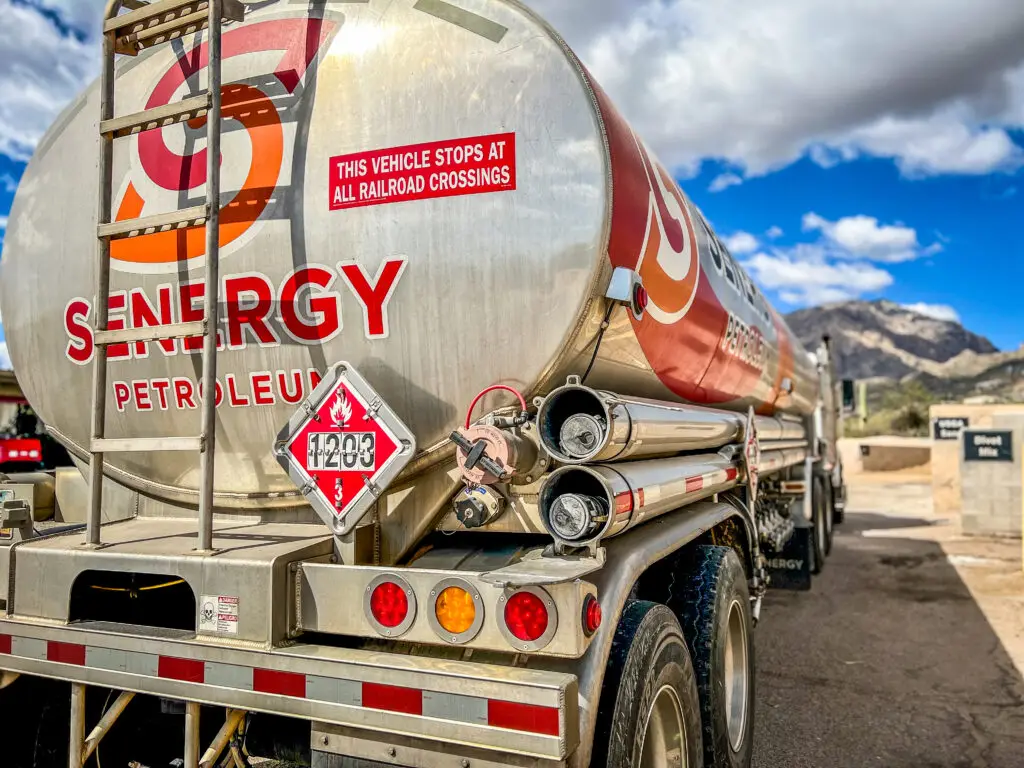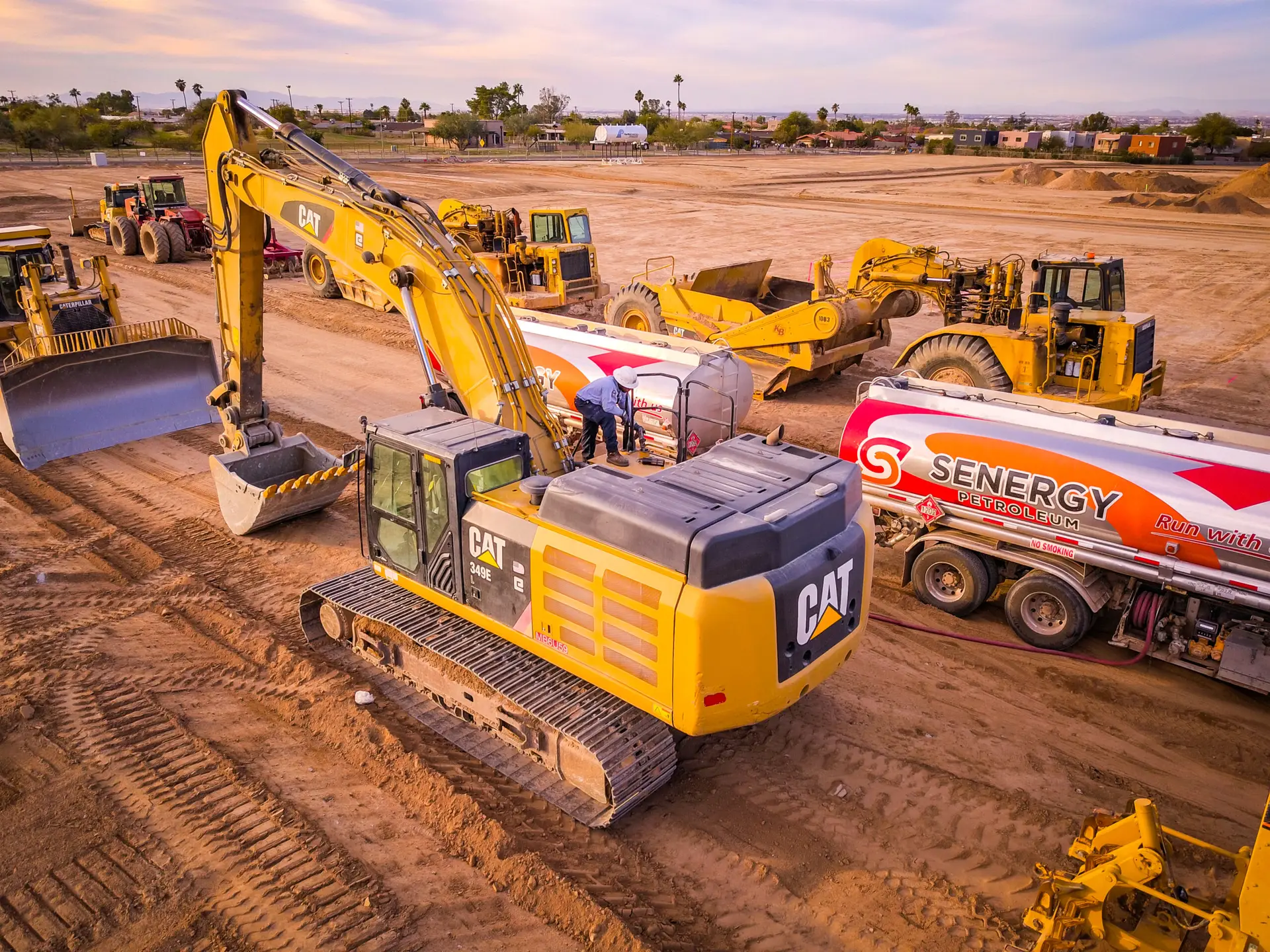Choosing the Right Grease for Heavy Equipment
Operating a fleet of heavy equipment is no small task. Whether it’s used in construction, agriculture, or mining, heavy machinery plays a critical role and must be kept in peak condition. Among all the maintenance tasks required, selecting the right grease is one of the most important yet often overlooked aspects. Properly greasing equipment with the right product can significantly extend its lifespan, improve performance, and prevent expensive breakdowns.
Understanding how grease functions and where it’s applied is the first step in making the right choice. Grease is used to keep moving parts lubricated, reduce friction, resist corrosion, and shield components from contaminants like dirt and debris. Knowing the specific needs of your equipment, as outlined in your machinery’s maintenance manual, is key to making the best decision. Let’s break down the steps to selecting the proper grease to maximize performance and longevity for your heavy equipment.
The Importance of Proper Heavy Equipment Lubrication
Proper lubrication is essential for maintaining a heavy equipment fleet. Whether it’s an excavator, bulldozer, or dump truck, every moving part requires the right lubrication to avoid premature wear and tear. Insufficient lubrication or improper application can lead to excessive friction, overheating, and eventual damage to components. Additionally, grease serves as a protective barrier, keeping dirt, water, and other contaminants out of vulnerable surfaces while eliminating metal-to-metal contact.
Fleet managers must consider that the grease they select directly impacts lubrication performance. Different equipment parts and applications require specific grease properties to function optimally. Using the wrong grease can result in equipment failure, leading to costly downtime and repairs. On the other hand, selecting the appropriate grease helps avoid mechanical issues and reduces maintenance expenses over time.
What to Keep in Mind While Making a Grease Choice for Heavy Equipment
Choosing the optimal grease for heavy equipment lubrication requires careful consideration of several critical factors. Equipment operating conditions and the specific tasks being performed should be at the forefront of a fleet manager’s decision-making process.
Key considerations include the equipment’s load and speed requirements. Heavy-duty grease is suitable for equipment under high loads, while lighter grease may suffice for machines operating at higher speeds. Selecting a grease that aligns with the load and speed specifications ensures sufficient lubrication and reduces wear and tear on components.
Grease performance can also be enhanced by additives specifically designed to meet equipment needs. Anti-wear additives, extreme pressure additives, corrosion inhibitors, and rust preventives are examples of chemical enhancements that improve lubrication performance and extend equipment life.
Compatibility with existing lubricants is another crucial factor. Some lubricants may not mix well and can lead to performance issues or even equipment damage. Choosing a grease that is compatible with current lubrication systems ensures seamless performance and avoids potential complications.
By focusing on these considerations, fleet managers can optimize the performance and longevity of their heavy equipment while minimizing maintenance challenges and downtime.
Types of Grease for Heavy Equipment
There are many types of grease available, each designed for specific applications. A fleet manager must understand the types and specifications to select the best option for their machinery. Some of the most common greases used for lubricating heavy equipment include:
-
Lithium Grease
Lithium grease is versatile, elastic, and reliable, making it suitable for various applications. It offers excellent water resistance and compatibility with most equipment operating under normal temperatures and conditions. While lithium grease is ideal for machinery exposed to moisture, such as construction and agricultural equipment, it is less effective in high-heat or heavy-load environments, as it degrades faster under extreme temperatures. -
Polyurea Grease
Polyurea grease is highly stable under heat and oxidation, with a strong load-carrying capacity. It is well-suited for equipment operating under high-speed and high-pressure conditions. Its resistance to degradation makes it an excellent choice for machinery exposed to extreme temperatures and demanding environments. -
Complex Greases
Complex greases are synthetically formulated with base oils, offering superior water and heat resistance. These greases are designed for heavy machinery subjected to rigorous working conditions in industries like construction, mining, and agriculture. Their durability makes them ideal for equipment that operates extensively under tough environments. -
Molybdenum Disulfide (MoS2) Grease
MoS2 grease is specifically designed for high-load and high-pressure applications. The molybdenum disulfide additive forms a friction-resistant film on metal surfaces, reducing wear. This grease is commonly used in heavy machinery such as bulldozers, cranes, and mining equipment, where load-carrying capabilities are a top priority.
By understanding the specific properties and applications of each grease type, fleet managers can ensure their equipment is lubricated effectively, maximizing performance and reducing downtime.


Fleet Managers Tips on Grease Maintenance
Proper grease maintenance is essential to ensure the chosen grease continues to perform optimally for years to come. Even the best construction and heavy-duty greases require regular upkeep to maintain their effectiveness.
Key Grease Maintenance Tips
-
Regular Grease Level Checks
Periodically check and maintain grease levels as prescribed by the equipment manufacturer. Insufficient grease can lead to reduced lubrication, increased friction, and accelerated wear of moving parts. -
Avoid Over-Greasing
While greasing is necessary, excessive application should be avoided. Over-greasing can attract dust and debris, leading to contamination and potential equipment damage. Follow the manufacturer’s recommendations for the correct amount of grease to use. -
Establish a Routine Maintenance Schedule
Incorporate routine grease servicing into your fleet maintenance schedule to keep equipment in peak working condition. For machinery operating under severe conditions or heavy usage, more frequent greasing may be necessary to ensure parts remain adequately lubricated. -
Proper Grease Application
Before applying new grease, thoroughly drain old grease and remove any residue. Accumulated material can clog equipment or damage internal components, reducing efficiency and increasing wear. Always clean fittings before adding new grease. -
Invest in Quality Grease
Using high-quality grease is essential for the long-term health of your equipment. While lower-grade greases may save money upfront, they can lead to premature gear failure and higher repair costs in the future. Invest in premium greases designed for heavy-duty construction equipment to ensure optimal performance and durability.
By adhering to these maintenance practices, fleet managers can extend the life of their equipment, reduce downtime, and avoid costly repairs caused by lubrication issues.
The Key to Long-Term Heavy Equipment Success
Managing heavy-duty grease applications is a significant responsibility for fleet managers. Quality grease plays a critical role in wear prevention, corrosion protection, and ensuring top-level performance and extended equipment life.
Fleet managers must consider operating conditions, speed and load requirements, water resistance, and lubricant compatibility when selecting grease for heavy equipment. By choosing the right grease and following best maintenance practices—such as regular greasing without over-application—they can maximize the lifespan and efficiency of their equipment.
Proper lubrication ensures heavy equipment operates smoothly, reducing downtime and enhancing overall efficiency. Over time, this proactive approach helps companies save significantly on repairs and replacements, contributing to long-term operational success.

